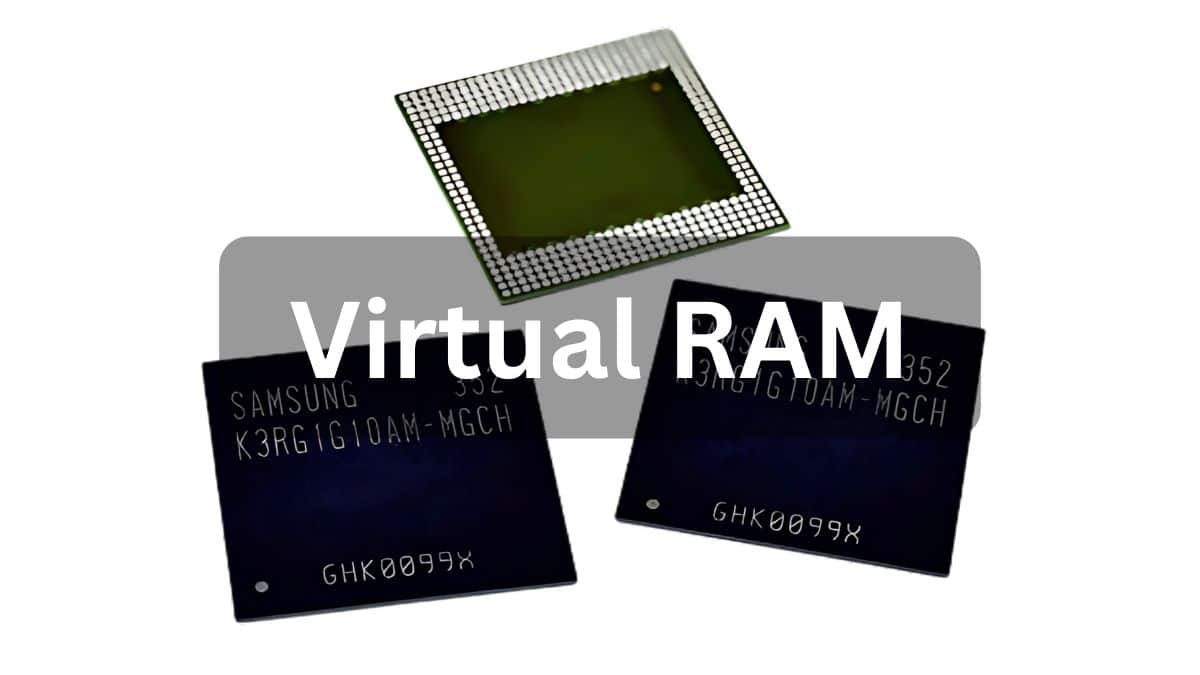HIGHLIGHTS
- Introduction of RAM & Virtual RAM.
- In this article, we explore the virtual RAM in a smartphone.
- Smartphones Comes With Virtual RAM.

Phone memory as in RAM stands for Random Access Memory. RAM is the portion of the phone that has the OS and where the apps and data active at a certain time are stored. Whereas, phone storage is used to store data like app, pictures, videos, any file which are important for the phone to function.
The Virtual RAM actually employs the interior storage of the phone as stand-in RAM which is referred to as Virtual RAM in common language. In this article we explore about virtual RAM in smartphones.
RAM & Virtual RAM
RAM stands for Random Access Memory. It is your smartphone’s temporary storage, that gets cleared when we turn off our phones for the night. We used this memory to store data of applications that are still in use, but not displayed on the screen at the moment. For instance, if you are involved in a game at the smartphone level, There is a sudden ring on the phone. You pause the game and go for this call. So the next time the bell rings, you are able to pick up from where the call left of and proceed to play the game.
Virtual RAM is a memory in which the built-in ROM of your smartphone will act as an actual RAM therefore increasing the amount of RAM present on your device. As the name implies this is a ‘virtual’ RAM implying that the amount of extended RAM is not installed as physical RAM in your smartphone.
Virtual RAM In Smartphone
Virtual RAM, actually means memory that serves the purpose of RAM but is not physically present in your device like the normal RAM. To the untrained, RAM refers to another storage component, well, it isn’t permanent, but it is vital for fast data access, Random Access Memory. This is not like your internal storage where the data is stored and is not deleted permanently. It is very fast and recent tests have proved that it is way faster than eMMC or UFS 3. 1 storage mostly used for long term storage. Essentially, internal storage retains data such as images and videos while RAM is a ‘reminder’ of which applications you had opened, and what you were doing in those applications the previous time you used them.
Working Of Virtual RAM In Smartphones
- Paging: In case all the physical RAM spare space is occupied and there is increased demand for it, the operating system transfers inactive information from RAM to the Swap on storage. This allows RAM to be available for active applications The memory management is effected through the use of virtual memory.
- Swapping: If a process attempting to access data that is not in RAM because most of the physical memory has been allocated to the disk swapping technique or has been swapped out, it results in page fault. The operating system then gets back the necessary data from the swap space to the Ram by substituting some other data if required.
- Memory Management Unit (MMU): This hardware component assists in equating virtual addresses used by programs, with physical addresses in RAM, and is engaged in the actual conversion of virtual to physical memories.
Virtual RAM in iOS:
Utilises RAM and has its own Virtual memory management system. Apple fine-tunes the iOS to handle memory small managing the paging system, thus enhancing the device’s efficiency and the battery’s overall performance.
Virtual RAM in Android:
RAM, zRAM which is a compressed RAM, and swap space in order to do that. The latest version of android offer the enhancements in memory management system like better handling of application run on background and efficiently use the zRAM.
Why have smartphone companies added virtual RAM in new smartphones?
- Improved Multitasking: Virtual RAM helps smartphones to support multiple applications to run at once without lagging. It is useful in ensuring that when the user is switching between various applications, there is continuity in the performance.
- Enhanced Performance: Hence, with increased RAM smartphones as a part of modern gadgets can store more of the Application and Processing mechanisms in the memory and thus do not need to reload them and thus avert bringing a qualitative change in the user experience mechanism.
- Cost-Effective Solution:Incorporation of virtual RAM helps to increase the performance of a device without the addition of physical RAM which is very expensive. This led to the manufacturers to be able to offer an improved performance while at the same time providing a reduced cost.
- Optimization for Budget Devices: Cut-price and mid-price smartphones can receive a great deal of advantages from virtual RAM. Such devices usually have less physical RAM, and virtually allows to elimination the difference between a budget and a flagship smartphone.
- Future-Proofing Devices: Since newer apps and operating systems are generally more demanding on RAM – having Virtual RAM essentially means that devices can stay useful and snappy for longer – prolonging the life of the device.
- Better Resource Management: Virtual RAM is beneficial in the efficient management of resources and the release of unused memory for use where it is most required. This allows the apps and tasks that require more resources to be allocated the sought resources and hence operate optimally.
Smartphones Having Virtual RAM
Note: Nowadays all the new smartphones mostly have Virtual RAM (Mostly in high-end and gaming smartphones)
Conclusion:
In the generation of smartphones, mobile companies continuously working to make better version according to today’s need of individuals. If we are working on it need various applications run on same time and it makes the smartphone slow, here virtual RAM or memory comes in the picture which help to make device faster working with various applications and apps in the background. In this article, we explain about the virtual memory which is helpful for us to have knowledge about it.
FAQs
Is there any benefit of virtual RAM?
The advantages to using virtual memory include: It can handle twice as many addresses as main memory. It enables more applications to be used at once. It frees applications from managing shared memory and saves users from having to add memory modules when RAM space runs out.
Does virtual RAM improve performance?
Virtual memory is used by your system to expand the available RAM when memory runs low, but it can impact performance. Increasing the size of your virtual memory can help alleviate slowdown issues, but upgrading your RAM is the best solution for improved system speed and performance.


